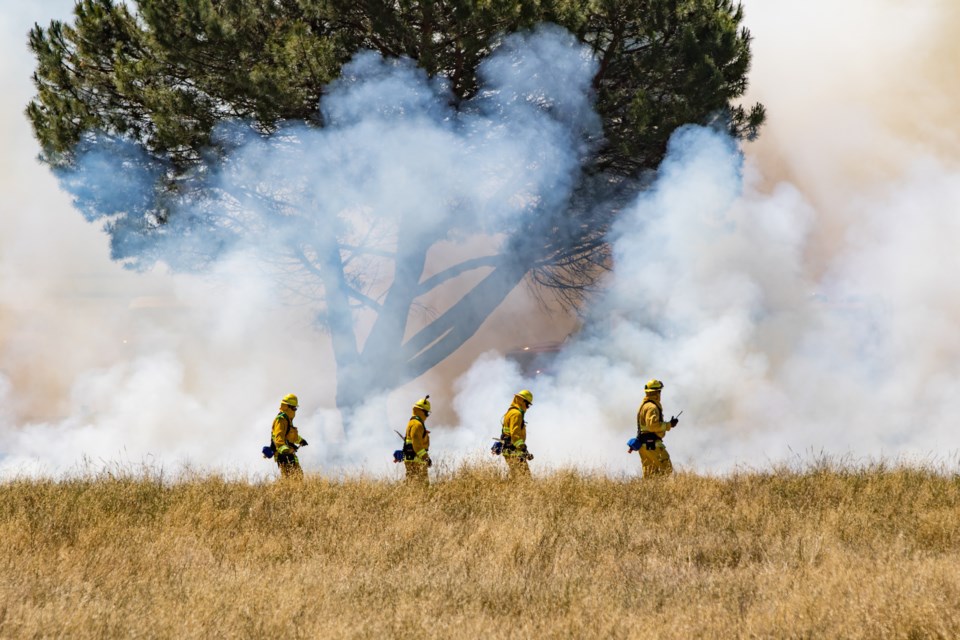LAC LA BICHE - With a few more weeks to go, officials tasked with keeping the province's forests fire-free are saying the Lakeland area saw an overall drop in activity this season. But Wildfire Alberta information officer Leslie Lozinski is quick to point out that with the fire season going to October 31, we're not out of the woods yet.
"Most of the wildfires in the Lac La Biche forest area happen during the spring and fall - in the spring, before green up, and in the fall after the grass is cured," she said, explaining the region's current HIGH level of hazard in the province's northeast. "It’s typical for us to have HIGH wildfire danger ratings in the fall, when the grass is cured, the temperatures are still warm and if there’s a wind. As the temperatures dip and humidity increases, the danger will drop again."
Until then, Lozinski urges residents and visitors to use the same cautions that have made the current fire season one of the least active in recent history for the Lac La Biche Forest that stretches from Cold Lake to Athabasca and north to Janvier. Fire officials recorded just 100 fires that burned just 56 hectares in total from May to the beginning of October.
"One hundred wildfires and 56 hectares for this area are lower than average numbers," said Lozinski. "Typically we hit 100 wildfires in May or June."
Statistically-reduced
According to Alberta Wildfire statistics, the entire province has seen a reduction in overall fires and forest areas burned so far this year. Statistics show just 666 fires across Alberta for 2020 — a 50 per cent reduction in the annual average of 1,300 fires reported over the last five years. The total area burned across the province was also far below average, with just 1,393 hectares scorched so far in the 2020 season, compared to a five-year average of 410,000. Although that data does include the massive Fort McMurray wildfire of 2016, Lozinski says this year's activity was noticeably lower.
Lozinski attributes the lower activity to a very wet summer season, as well as precautionary fire bans put in place in late spring.
"With fire restrictions and bans in place many people used propane fire pits when camping and this helps to reduce the number of wildfires or abandoned campfires," she said. "The rain we had almost everyday this season also had a lot to do with it... Damp or soggy ground makes it harder for quads and OHVs to start fires, harder for embers to start fires, and harder for fires to spread."
Lozinski also credits forestry staff for observing and reporting wildfires before the flames could spread.
"Our objective is always to catch new wildfires when they are small and to contain them," she said, crediting initial spotters who spend the fire season in remote locations. "Lookout observers monitor the forest for smoke from human-caused fires as well as watching for lightning strikes and any wildfires that start as a result of those storms. Everyone is very good at spotting and actioning new fires."
Human help
And despite adding a lot of praise for the majority of visitors to the area's forests this year, Lozinski said one statistic continues to standout when it comes to forest fires.
"We had five lightning-caused wildfires this season. That means that 95 wildfires or 95 per cent of our wildfires were human caused. This is a sad statistic," she said. "We can improve these numbers by remembering a few things: put your campfires out before you leave them, clean quads and OHV of debris, and remember to get a permit before burning."
With fire season officially running to the end of this month, fire permits are still required for any burning other than a campfire within the Lac La Biche Forest.
And just because the season is over, that doesn’t mean the workload is done for fire officials — and area residents.
“As this wildfire season draws to a close we are looking ahead to next season,” said Lozinski, explaining that many effects of the 2020 season can cause changes for seasons to come. “With all the rain we had this year, the grass flourished. It’s drying out now, and it will most likely present a significant wildfire risk next spring.”
She encourages Lakeland residents to add fire-prevention tasks to their autumn activities, including cutting the grass around houses and outbuildings, making sure woodpiles aren’t right next to the house, and making sure any piles from fall landscaping are far from houses and other buildings.


